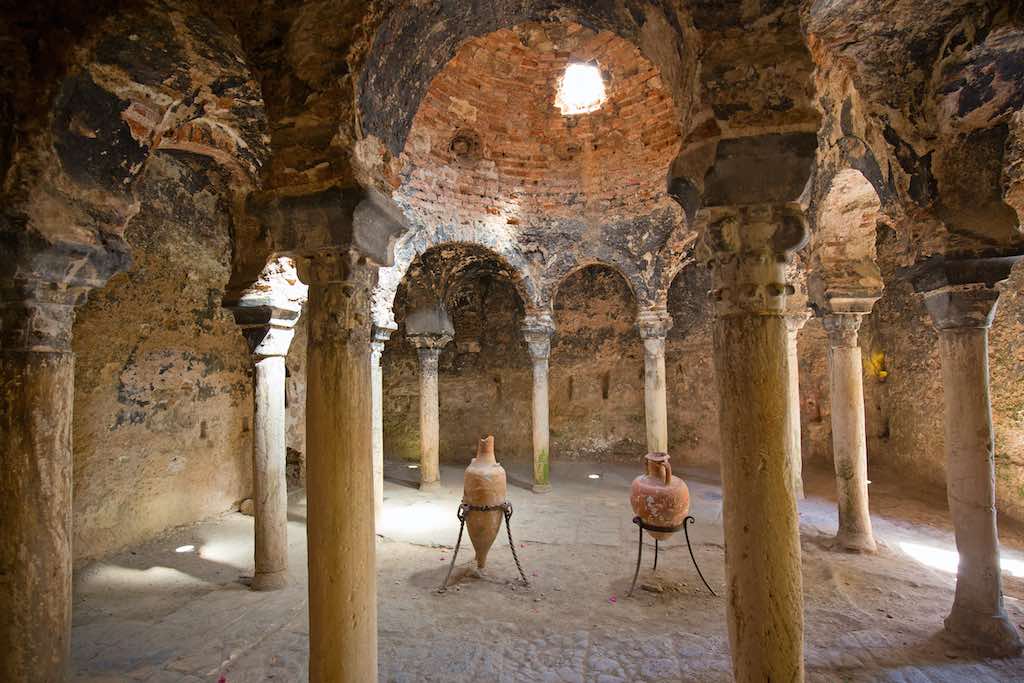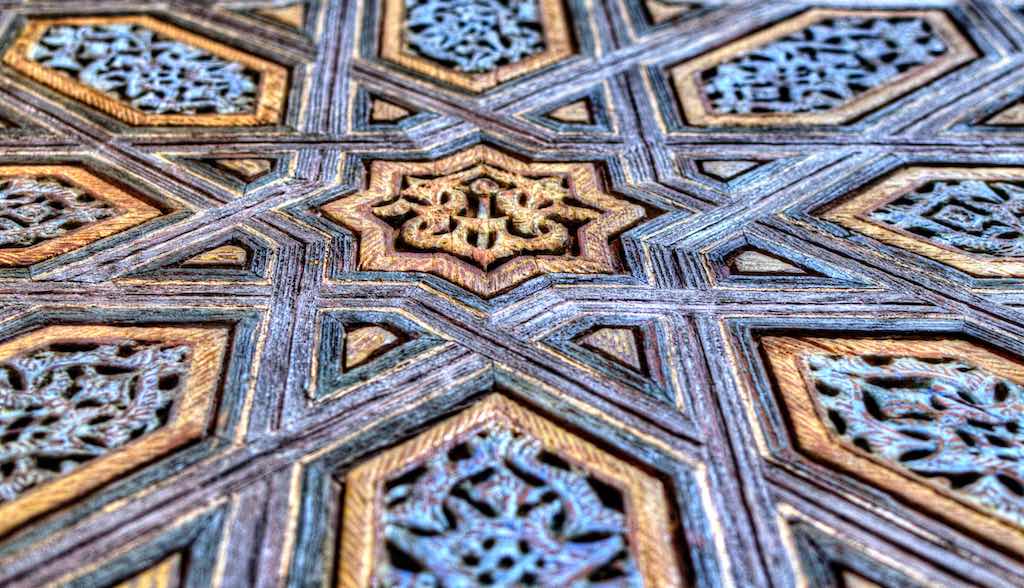Contenidos
Arab architecture hides an exotic and charming point that attracts us to discover more about the history, culture and characteristics that make up the culture. Its vivid colours, geometric shapes and striking decorations become a hypnotic hallmark for many lovers of its art and history.
In Spain, luckily, we have a great legacy from the Muslim era so important in Mallorca, the island of Mudejar art. Walk the streets of the beautiful Balearic Island and discover places as unique as the Arab baths of Mallorca.
The Muslim occupation in the Balearic Islands
Mallorca is an island with historical reflections of ancient times. In fact, when walking around the island, you will be able to observe great touches of what was the Muslim occupation in the Balearic Islands and how the passage of time has managed to maintain its essence and legacy.
To understand the beginning of that Muslim era, we must go back to the conquest of Mallorca in 902, when the Muslim troops of Isam al-Jaulani faced the resistance of the islands. In 904 the conquest was recognized, maintaining Muslim domination in Mallorca until 1229.
It is believed that the Arab era in Mallorca began when a powerful man of the Emir of Córdoba was traveling from Mecca by boat and a storm forced him to seek refuge. Without knowing it, they reached Mallorca, a place that would become his refuge and that later, that same man reported on the existence of said island. This is how Isam al-Jaulani informed his lord that this island was part of an archipelago known to the Romans as Balearia.
It was then that the emir decided to send many ships to Mallorca to conquer it. It was more than 8 years where natives of the island managed to endure but, finally, Isam al-Jaulani managed to be named lord of Mallorca.
Centuries after that time, culture continues to be reflected in the art, culture, and architecture of the island of Mallorca, with the Arab baths being one of the best examples of the Muslim conquest.

The Arab baths of Palma de Mallorca
Already in Muslim times the multiple benefits of water for the body were known. In fact, at that time, it was considered one of the main sources of life, so leisure and day-to-day activity revolved around this natural element. This is how Muslims introduce traditions related to water in Spain, such as the so-called hammam or Arab baths, a place where they spent long hours enjoying the water and a moment of conversation.
The hammam in Spain, as in other Arab countries, was a fundamental element of the culture and social life of the people. In fact, much of the leisure of men and women revolved around rest and meeting in these places. Water, an element that evokes serenity and calm, is the main element to achieve an atmosphere of tranquillity in these Arab baths. The noise of the water is accompanied by different lighting systems and geometric shapes on the ceilings that further promote the evocation of serenity.
Today Arab baths are preserved in perfect condition, and some of them are even perfectly renovated and open to the public. In fact, the Hammam Al Ándalus in Palma de Mallorca is an Arab bath where you can re-establish the bond with yourself surrounded by unique Arab-style settings and decorations.

The importance of Mudejar art in Spain
Mudejar art makes up an important part of the historical and artistic identity of Spain. This style, the result of the coexistence of different cultures during the Middle Ages, is characterized by having Hispanic-Muslim influences and elements. It is a completely unique style that is generated in our country at a time of union and mixing of Muslim art with Romanesque, Gothic and even Renaissance.
In this way, Mudejar art is characterized using soft materials such as plaster or ceramics and the ornate decoration of elements and surfaces.
Mallorca is full of places with Mudejar art being, although not the only place in Spain where you can enjoy this beauty, one of the most important cities. Places like Valladolid, Zaragoza and Teruel are also mandatory visits if you like this characteristic artistic style.
It is important to note that the artists, mostly Muslim, were great experts in masonry, carpentry, and crafts. They also mastered different and expert Islamic architectural techniques that today have given so much identity to this artistic style.
If you like Muslim art and culture, we recommend you live the experience of a Hammam in the heart of Palma de Mallorca. You will feel the journey of the water that will transport you centuries ago, re-establishing the bond with yourself in an evocative setting.


